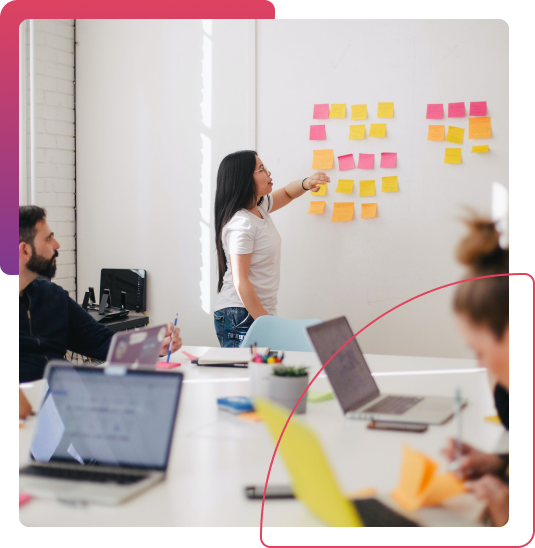
Case study
Transforming Employee Experience

Challenged with boosting frontline productivity, we worked with distributed teams to track their pain points and select the right opportunity.

Timing, source of information, and context - put together, we always !nd what we need to know.
Research is a nuanced art wherein we gather helpful information from the right sources and analyse in consideration of its context. That’s when findings evolve into actionable insights.
Discover what we don’t know
Translate theory into practice - and test
Validate our efforts (and success)

A holistic vision for our users that’s brought to life. When we’re done building it, we enhance it.
We create wholesome experiences that account for our users' thoughts, feelings, behaviors, challenges and empowers them. This cascades to benefit the business as well.
Manifest success through insights from a rigourous reseach methodology
People are at the heart of our design process
Focus on user needs and responses to craft positive experiences

Connecting the digital with the physical - we curate every interaction.
It’s the sum that makes the whole and so, we take great care to design the elements that form the first layer of the experience for our users.
Adopting a design language to best communicate with users
Empowering capabilities & information for our users
For experiences that include and impact everyone

Good design blends in but our visual work will definitely catch your eye.
Our deep of understanding of our users, alignment with businesses and knowledge of branding enables us to craft stunning visual elements and collaterals.
We ensure each product is its own and still part of the PepsiCo portfolio
Consistent designs across all platforms, we don’t compromise on experience
Design decisions backed by science for an enhanced experience

Stay ahead of the curve.
In an uncertain future, with shifting market needs and unparalleled technical advancements, we prepare for the new. In the new way of doing new things our north star remains a human-centeredness approach.
Growth-minded culture to continously challenge ourselves and the status quo
Know the now to predict the future
Validate ideas for all intents and purposes


Bring the Business Objectives Bring the User's Objectives Prioritize & Align with Business
It is a one-pager that helps facilitate discussion about a product's features or capabilities. Much like the Business Model Canvas or Lean Canvas, the Opportunity Canvas helps you walk through how customers will use your solution, potential setbacks, strategies, challenges, and metric.
A user journey visualized with a technical solution and mapped to user value in terms of problem-solving pain points and business value. It brings the backlog to life and makes the end-to-end vision clear.


Understand User segmentations
Conduct research
Synthesize research data into actionable insightss
UX persona is a fictional character which represents your target users. Personas are an extremely valuable UX tool, allowing you to better understand your target audience and make design decisions accordingly
A path a user may take to reach their goal when using a particular website. User journeys are used in designing websites to identify the different ways to enable the user to achieve their goal as quickly and easily as possible


Brainstorming solution ideas Solution Concepts
Lo-Fi Design
Validation
A simulation or sample version of a final product, which UCD team tests with the end users, gets feedback & incorporate that feedback. The goal of a prototype is to test and validate ideas before sharing them with stakeholders.


Define Roadmap Create Detailed Flows Create Hi-Fidelity Designs
A minimum viable product (MVP) roadmap is a tool to determine what features or products to release to validate the business ideas with the least amount of resources and time.
Unlike current-state journey mapping, future-state journey mapping focuses on creating new experiences for the user, rather than repairing existing ones. It focuses on unlocking new areas of customer interaction and value, rather than highlighting pain points or areas of difficulty.
High-fidelity wireframes are built when the baseline ideas are already validated with users and the team is in the advanced stages of the design process to communicate design decisions to the development team prior to coding the final product. Additionally, they help validate complex interactions during user testing.